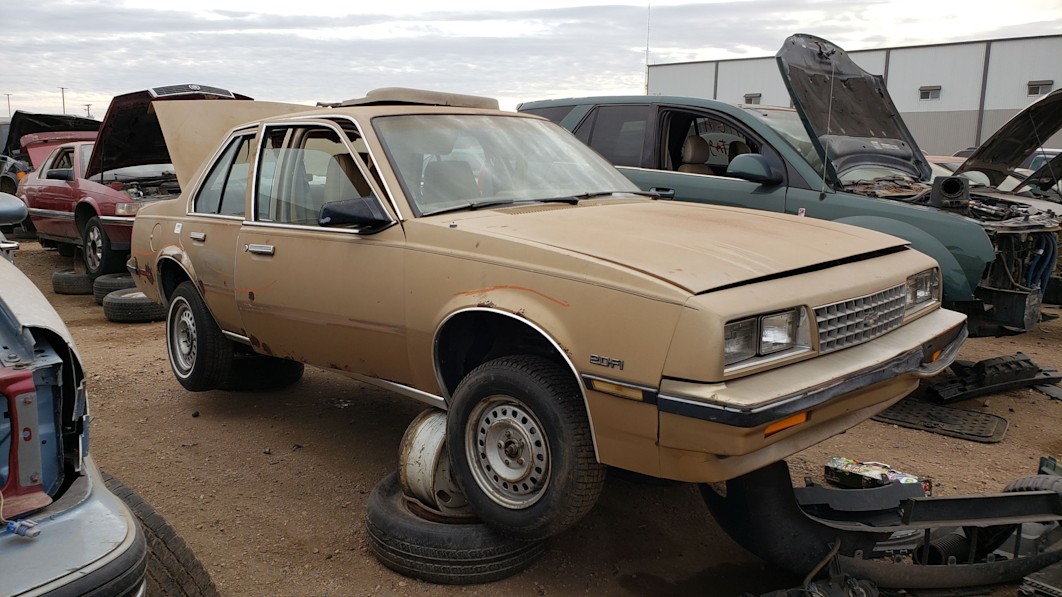Junkyard Gem: 1986 Chevrolet Cavalier CS Sedan

Quick, what General Motors platform stayed in production for nearly a quarter-century, on five continents? No, not the rear-wheel-drive T-Body (best-known here as the basis for the Chevette), because those cars were built for more than a third of a century. We’re talking about the extremely successful J-Body, which made its debut for the 1981 model year and stuck around until the very last Chevy Cavaliers and Pontiac Sunfires rolled off the lines in Lordstown and Ramos Arizpe. The best-known of all the Js was the Cavalier, of course (both the American version as well as the British one), and the first-generation 1981-1987 version was a gigantic sales hit for The General. Even with nearly two million first-gen Chevy Cavaliers sold, I find these cars nearly nonexistent in junkyards today. Here’s one of the few that managed to survive well into our current century, found in a yard in northeastern Colorado last month.
The top-of-the-line Cavalier for 1986 was the sporty Z24, though the RS convertible was the most expensive. The CS trim level was just one small step above the wretched base Cavalier (sales of which went mostly to fleet buyers), and the CS sedan cost $7,350 versus the base sedan’s $7,047 price (that’s around $18,640 and $17,870 in 2021 bones, or clams).

Given the super-cheap original sale price and subsequent rapid depreciation of this very affordable compact, it’s impressive that its owners held onto it for so long with all the rust.

Only two engines were available in this car: the base 2.0-liter four-cylinder (rated at 85 horsepower) and a 2.8-liter V6 with 120 horses. Since the V6— which was standard equipment in the $9,068 Z24— added 610 clams to the cost of a Cavalier CS (that’s about 1,545 bones now), you won’t find many of these cars with the extra 35 horsepower.

The base transmission in the ’86 Cavalier was a four-on-the-floor manual, but just about every Cavalier shopper who wanted a three-pedal setup opted to pay the additional $75 ($190 now) for the five-speed. However, most American car buyers during the middle 1980s wanted automatics, just as they do today, and so most of these cars have the three-speed automatic you see here. That cost an additional $465, which comes to about $1,180 after inflation.

The Cavalier was never luxurious, but it was cheap and it got the job done.
It’s been a busy afternoon. It’s been a lazy afternoon. And everything’s cool.
Drink Pepsi, win an ’86 Cavalier!
You think Gorbachev could offer cars like this to the Soviet people?







